What Are The Second Messengers In The Gpcr-phospholipase C Signal Transduction System?
What are the second messengers in the gpcr-phospholipase c signal transduction system?. Inositol triphosphate and diacylglycerol Which molecule of the GPCR-adenylyl cyclase signal transduction system phosphorylates proteins to create the cellular response. Second messengers are small molecules that mediate the intracellular response to an extracellular stimulus. These GPCR receptors are also known as G protein-linked receptors GPLR seven transmembrane domain receptors 7TM receptors serpentine receptors and heptahelical receptors.
Phospholipase C is another common target of activated G proteins. The enzyme catalyzes the hydrolysis of phosphatidylinositol 45-bisphosphate PtdIns 45P2 and thereby generates two second messenger molecules namely inositol 145-trisphosphate IP 3 and diacylglycerol in response to the binding of various ligands to their cell surface receptors. Receptor coupling through Gq results in the activation of phospholipase C-β PLC-β.
Both DAG and IP 3 can serve as secondary messengers to stimulate downstream signaling events. The target and release calcium from intracellular stores respectively. These cell surface receptors act like an inbox for communications in the form of light energy peptides lipids carbohydrates and proteins.
Another common G protein effector molecule is Phospholipase C PLC. This receptor passes the cell membrane by seven times and forms the N-terminus outside of the cell membrane exoplasmic side and C- terminus inside of the cell cytosolic side. 1 activation of adenylyl cyclase by G-protein-coupled receptors GPCRs to generate the cyclic nucleotide second messenger 3-5-cyclic adenosine monophosphate cAMP.
In the classic model of neutrophil activation engagement of receptors results in the activation of phospholipase C which cleaves phosphatidylinositol triphosphate PIP 3 into diacylglycerol DAG and inositol 145. 35-cyclic AMP cAMP 35- cyclic GMP cGMP. What are the second messengers in the GPCR-phospholipase C signal transduction system.
This membrane-associated enzyme catalyzes the synthesis of not one but two second messengers DAG and IP3 from the. The activated proteins then participate in a cellular response. They are one of the triggers of intracellular signal transduction cascades.
A membrane-bound adenylyl cyclase synthesizes cAMP from ATP. Both DAG and IP3.
This receptor passes the cell membrane by seven times and forms the N-terminus outside of the cell membrane exoplasmic side and C- terminus inside of the cell cytosolic side.
A membrane-bound adenylyl cyclase synthesizes cAMP from ATP. What are the second messengers in the GPCR-phospholipase C signal transduction system. The intracellular signaling molecules termed as second messengers of certain low-molecular-weight which are a short-lived and can increase or decrease in the concentration that causes a change in the function of enzymes or non-enzymatic proteins. In the classic model of neutrophil activation engagement of receptors results in the activation of phospholipase C which cleaves phosphatidylinositol triphosphate PIP 3 into diacylglycerol DAG and inositol 145. PLC is a lipase that cleaves phosphatidylinositol 45-bisphosphate PIP2 into the second messengers diacylglycerol DAG and inositol 145-trisphosphate IP3. 35-cyclic AMP cAMP 35- cyclic GMP cGMP. Phospholipase C is the target enzyme for some GPCRs phospholipase C-β as well as enzyme-linked receptors such as tyrosine kinase receptors phospholipase C-γ. A membrane-bound adenylyl cyclase synthesizes cAMP from ATP. Second messengers are small molecules that mediate the intracellular response to an extracellular stimulus.
Ad GPCR Production Including by MemProArtTargets OptimizationContact Us Now. Once activated G-proteins trigger the production of a variety of second messengers eg. Receptor coupling through Gq results in the activation of phospholipase C-β PLC-β. Second messengers are small diffusible molecules that are generated in response to stimuli and transmit signals from membrane receptors to downstream effector proteins. Three classic second messenger pathways are. Both DAG and IP 3 can serve as secondary messengers to stimulate downstream signaling events. The enzyme catalyzes the hydrolysis of phosphatidylinositol 45-bisphosphate PtdIns 45P2 and thereby generates two second messenger molecules namely inositol 145-trisphosphate IP 3 and diacylglycerol in response to the binding of various ligands to their cell surface receptors.
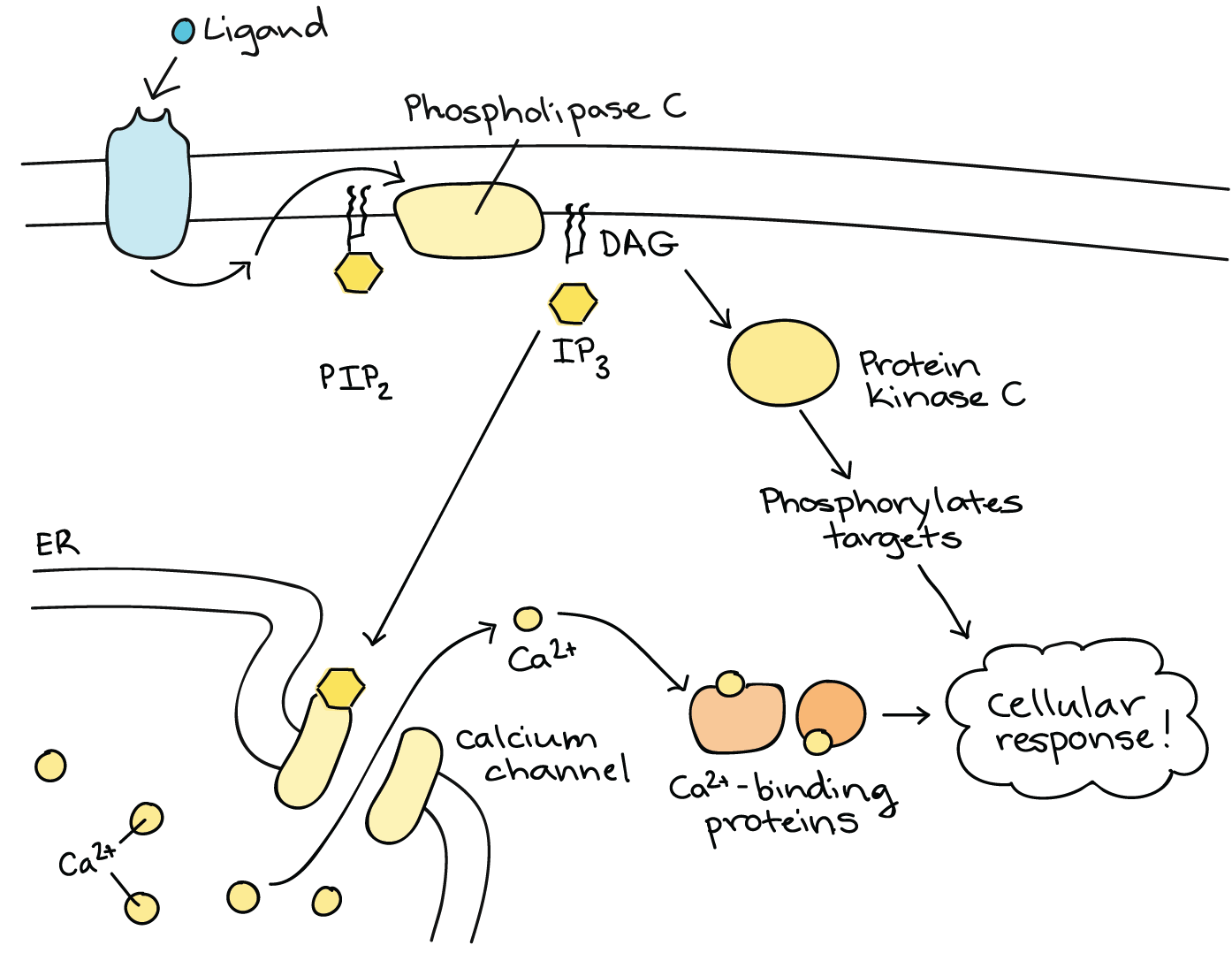



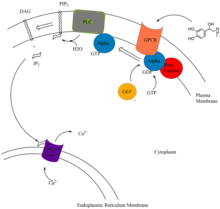


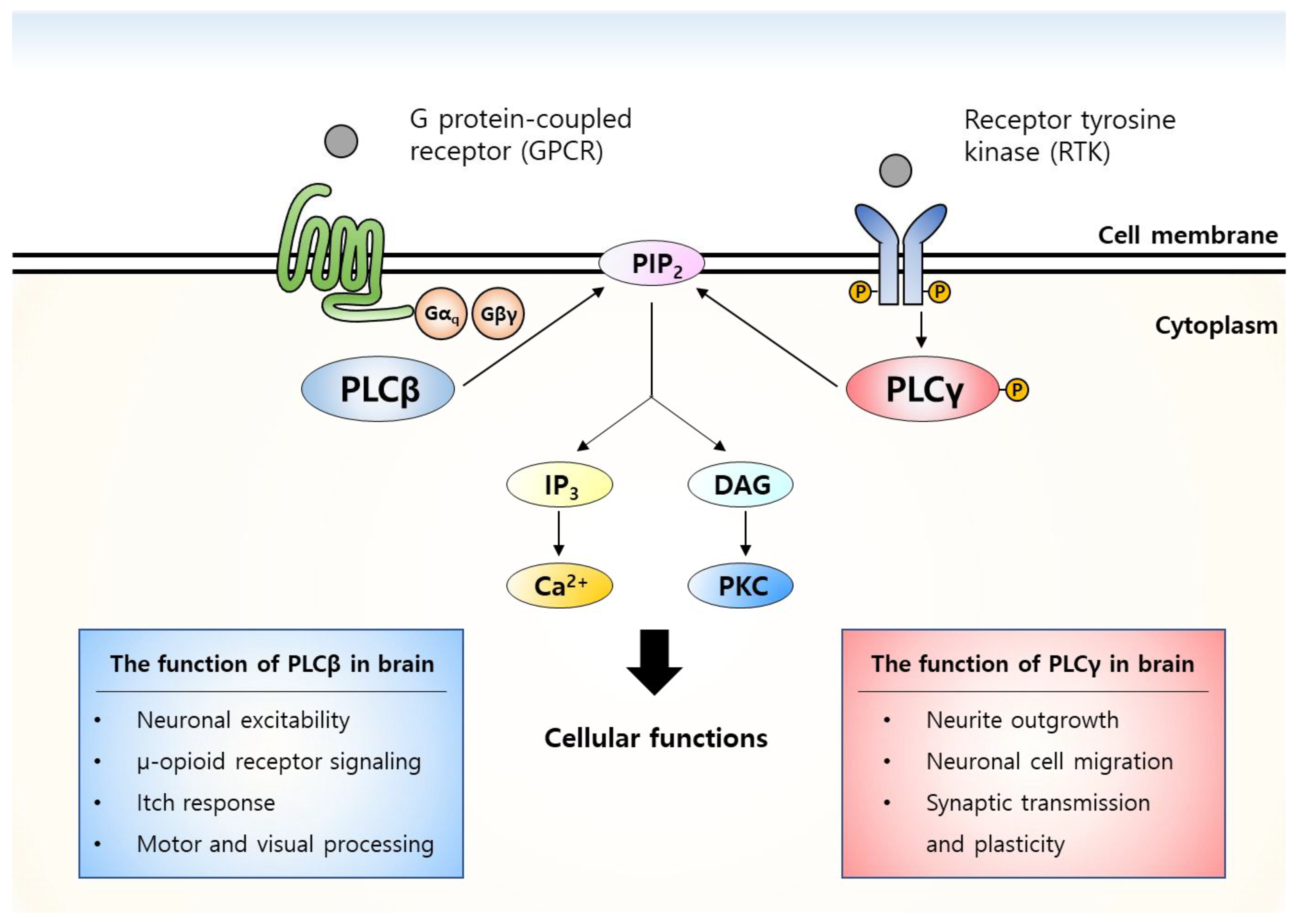






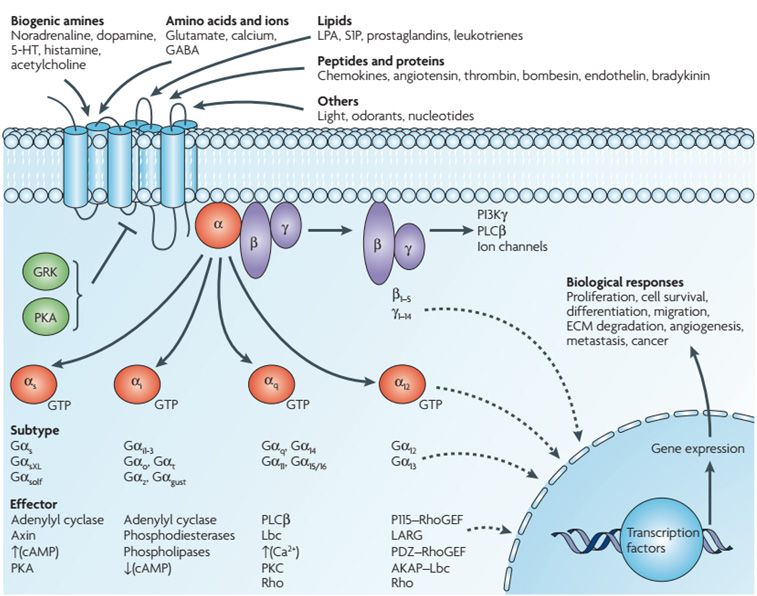





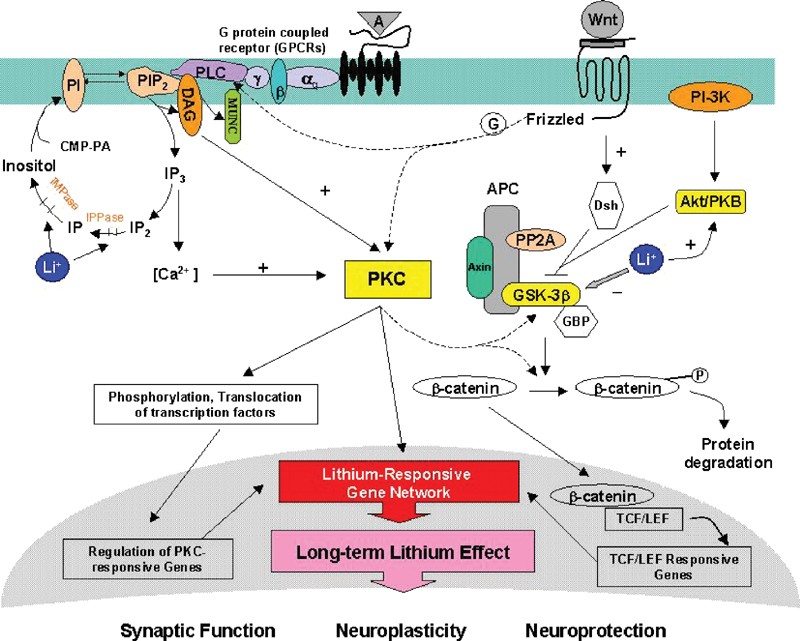


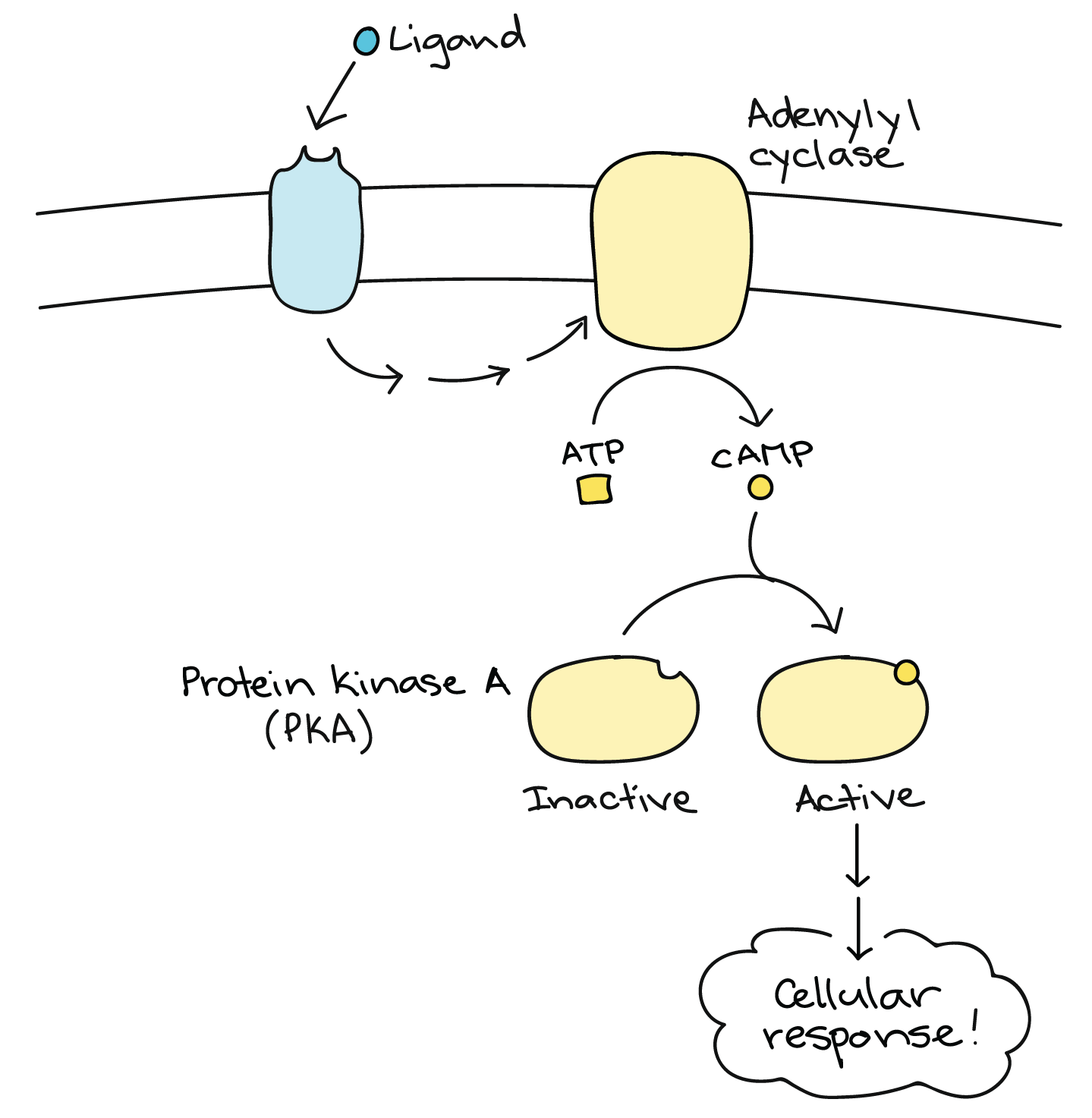
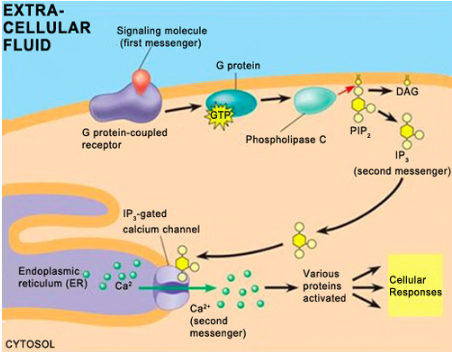
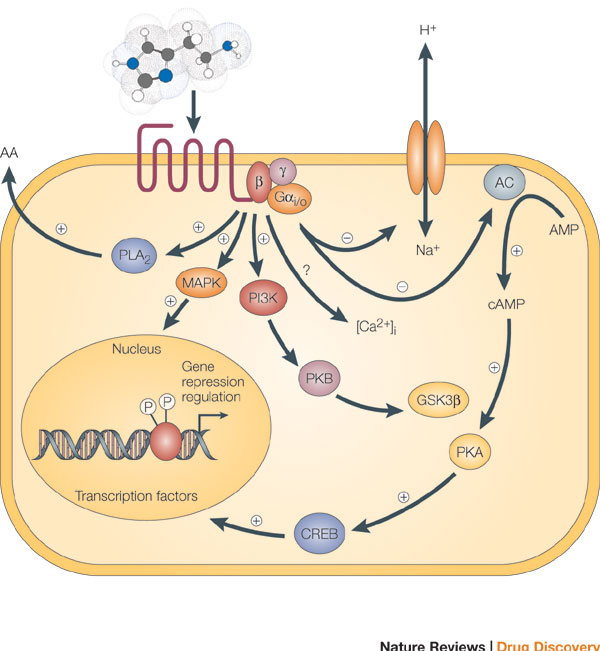









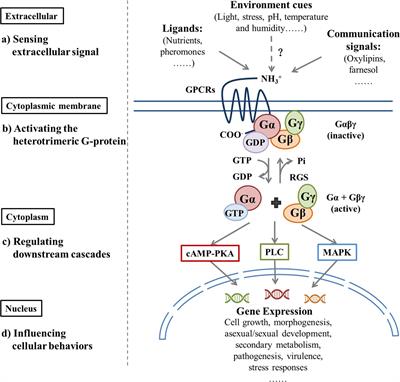
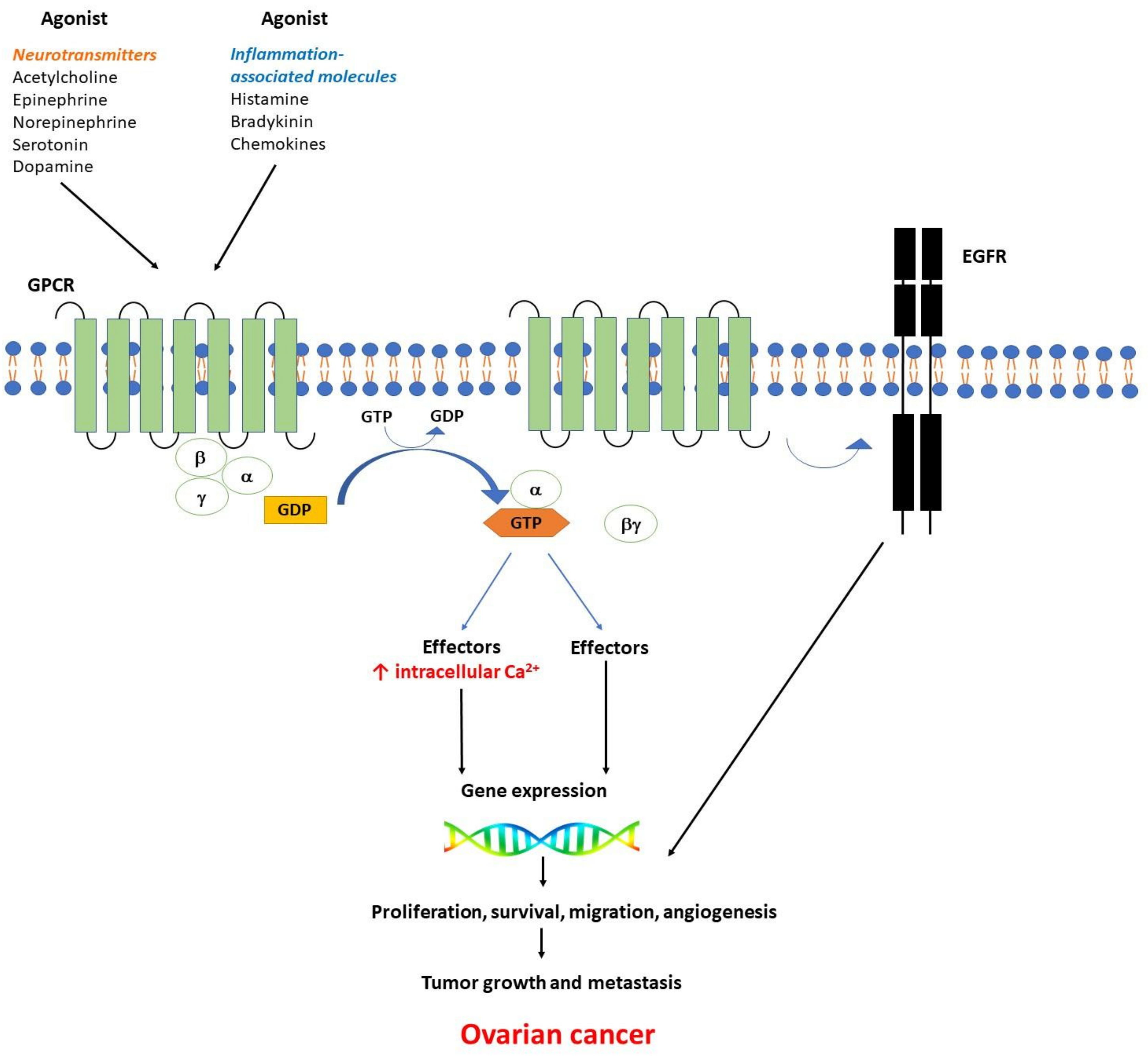


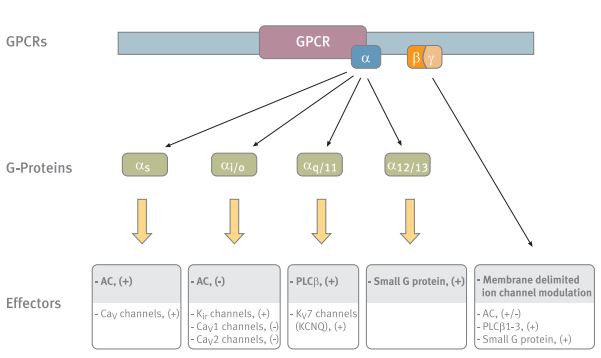




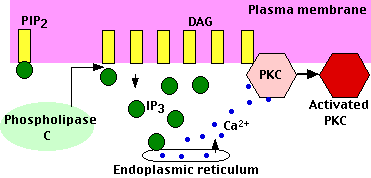
Post a Comment for "What Are The Second Messengers In The Gpcr-phospholipase C Signal Transduction System?"